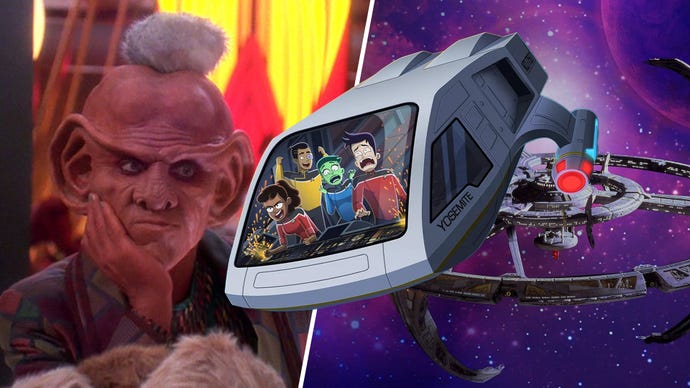This cartoon is the best Star Trek has been since Deep Space Nine
The critical success of this animated spin-off proves that you shouldn’t judge a holonovel by its isolinear rod.
Lower Decks isn’t a ‘traditional’ Star Trek show. That sentence makes perfect sense, right? Of course it’s not a ‘traditional’ Star Trek show. It’s a cartoon. The characters all speak really quickly like they’re in a cartoon. It’s animated, and it’s written and produced like a cartoon, because it’s a cartoon.
In reality, the concept of a ‘traditional’ Star Trek show is a faulty one. This is a series/franchise/media brand/shared universe (pick the least nauseating term) that thrives on reinvention, producing a bewildering number of spin-offs that all, for better or worse, come with their own unique proposition for what a Star Trek show can be about.
The only thing untraditional about Lower Decks is its premise: that it follows the lives of a core ensemble of bottom-rung characters, on one of the least important ships in the fleet, where the usual command level heroics and big picture stories are merely a backdrop. It understands and respects Star Trek Tradition perfectly well enough. It has to, in order to turn it on its head so deftly, with the love and affection for Trek’s past that exudes from every aspect of the production: the 90s throwback art direction, the sound design, the deep cut in-jokes that you won’t get unless you spent your teens reading The Deep Space Nine Technical Manual instead of smoking tabs and having loads of awkward sex.
Indeed, the very fact that it takes its name from a landmark TNG episode, one sequelised in this latest season (all now bingable on Paramount Plus) to outstanding effect. A painstakingly earned connection to a classic episode, poignant, thrilling, and deliberately silly. It's incredible television, and does things with the Star Trek formula that just couldn't happen anywhere else. Which is why a lot of Trekkies simply won't watch it.
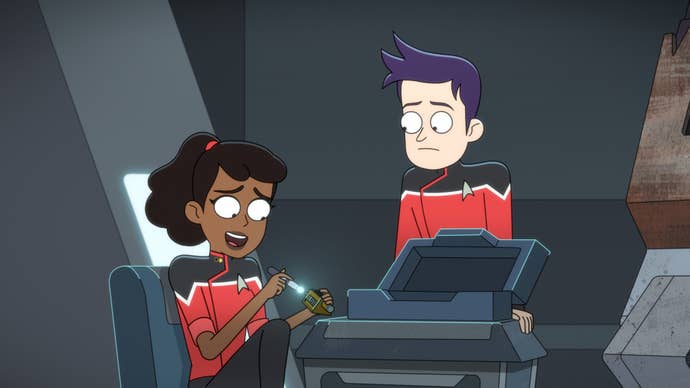
When a Beloved Thing becomes a Cultural Institution, it’s usually a death sentence. If not for its status as a going concern, then for whatever spark of creativity or inventiveness that made it beloved in the first place. Hit TV shows either bow out while they’re still good, leaving the people wanting more, or they limp along for what seems like forever, locked in a downward spiral of diminishing returns, terrified of changing the formula lest it alienate the devotees.
Star Trek wasn’t a hit TV show, and it didn’t bow out while it was still good either. Cancelled after a dismal third season, it was an expensive headache of a show that never quite found its audience. Not until it was syndicated some years later, in fact, which led to its revival as a saturday morning cartoon, then a series of films that ranged in quality from “Peerless Science-Fiction Masterpiece” to “Directed by William Shatner”, then the aforementioned spin-offs, beginning in 1987 with Star Trek: The Next Generation.
Infamously, Star Trek fans hated it, because it changed things. This bald academic is no substitute for Kirk, etc etc. Nowadays it’s probably more highly regarded than the original show, of course, because generations of people have grown up loving it. People who now find themselves presented with a revived Star Trek franchise that keeps Getting Things Wrong.
It’s traditional at this point to draw a parallel between Trek fans in 1987, those idiotic fools who failed to appreciate TNG’s genius from the off, and modern Trek fans, these idiotic fools who don’t understand that Discovery will be regarded with the same reverence as TNG in twenty years, and anyone who thinks it’s a load of incoherent Targ’s kidneys in which every conflict is solved by Michael Burnham sobbing about her mother, or whatever, is destined to look foolish by that point. Assuming there’s anyone left to pass judgement by then who hasn’t boiled to death in the climate apocalypse.
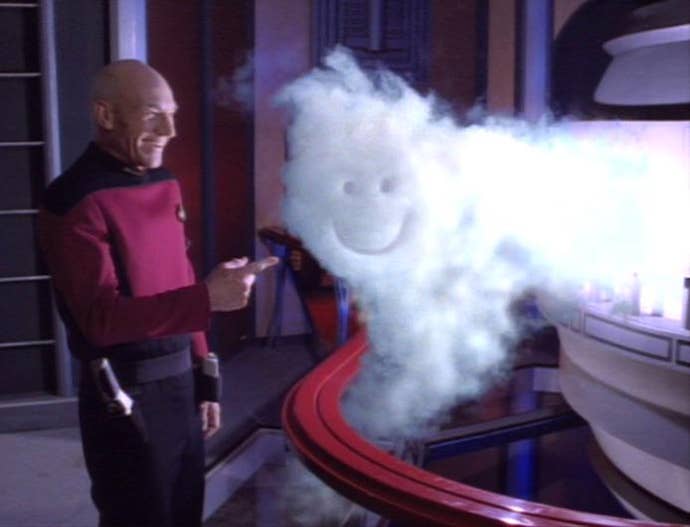
The thing about those foolish Trek fans in 1987, though, is that they weren’t entirely wrong. TNG’s first couple of seasons did suck, due to numerous factors that entire books and dozens of hours of documentaries have been produced about. But it got better as it matured, and found its own feet, stepping out from under the shadow of its predecessor and inspiring a load of spin-offs of its own. One of which was Deep Space Nine, which is still the best Star Trek show ever produced. And, yes, trekkies hated it when it started. And, yes, they kinda had a point: that pilot was rough going, and it took about thirty episodes for the show to start picking up. Which seems mental now, but this was a time when TV seasons were usually between 22 and 27 episodes long.
In a very Star Trek fashion, Deep Space Nine wasn’t really appreciated in its day either. It was generally regarded as the ugly stepchild of the franchise. For years, the prevailing view was that it sucked because it was slow, it wasn’t even set on a ship, and the crew rarely went anywhere except Bajor which was a boring planet full of boring arseholes. The consensus shifted dramatically, though, with the advent of box sets and streaming. DS9 could never have been made in a different time: it is a 90s production through and through. And yet, the best way to enjoy it is to binge watch. It seems designed for that, despite predating the concept by over a decade.
When marathoned, or at least watched at a higher frequency than 26 episodes per year, DS9’s grand vision comes together much more quickly, and the various arcs can truly be appreciated for their long-game boldness: the Dominion War, for example, which dominates the latter three seasons, is very clearly seeded from the get go. But if you were watching once per week, you’d never keep it all in your head. Imagine the usual tangent about Babylon 5 here if you want.

Lower Decks and DS9 are tonally about as opposite as you can get. Even DS9’s big war action scenes with massive battle fleets smashing into each other are positively sedate compared to LD’s 200mph line delivery of four ensigns having their morning cuppa. But the two shows have a lot in common beyond the shared universe: LD’s reverence for 90s Star Trek, and the glee with which it has fun playing in that world, is not unlike DS9’s eagerness to pick up threads dropped by the Original Series and run with them. And much of the show’s characteristic humour shines through in these episodes. The intrinsic daftness of Klingons. The regular city-breaks to the Mirror Universe, where the actors are let loose on theatrically twisted, comically weasley versions of their usual characters. An entire Tribbles callback episode full of TV production jokes, that even ends on a massive punchline.
Not to mention the genuinely hilarious Ferengi episodes, which a lot of philistines skip. The borderline sitcom relationships between Quark and Rom, Bashir and O’Brien etc. The point is, far from being a stuffy, serious show about doing a space war, DS9 does a lot of jokes. It has a sense of humour that is genuinely laugh-out-loud once you’ve dialled into it. Which is a bit of a Trek staple actually: every series has its own comedy frequency, including the original.
Lower Decks is more or less an entirely complete Berman era Trek show. All the elements are present and correct: strong character arcs, situation-of-the-week drama, quality performances that elevate silly sci-fi plots which are often, y’know, a bit crap when you think too hard about them. Humour, of course. It’s all the same stuff. But the sliders have been fiddled with. The gag rate dialled up 1000%. The pacing set to warp factor 9.9. And, perhaps most riskily, its self-indulgence channelled through the deflector dish and shot through a Borg cube. It absolutely revels in being Star Trek, in messing around with the goodies in that vast interstellar toybox, but it isn’t afraid to remix those things in ways that would scarcely occur to the writers that originally came up with them.
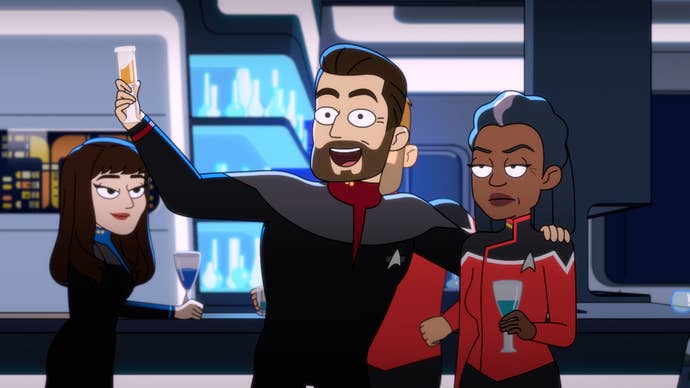
It’s a Star Trek show that loves being a Star Trek show, which I realise is an iffy proposition in an era of cultural stagnation where it’s impossible to get anything commissioned unless it’s tied to some existing Media Brand and has a pre-packaged audience. And that’s why there are still a lot of Trekkies who just can’t get past first appearances when it comes to Lower Decks. We know this because they all kicked up a right stink when Lower Decks characters made their live action debut in this year’s Strange New Worlds crossover (which was excellent, by the way).
I get it. I understand. The prospect of Trek being set upon by ex Rick & Morty staffers and turned into some horrid bastardised Funko Pop generator is a galling one. Or “the back corner of HMV”, as a friend of mine once lamented. And let’s face it, the rest of New Trek didn’t exactly inspire confidence in this bold experiment. Discovery is unfettered crap. Picard was abysmal until it just threw its hands up and did a TNG epilogue season, which was Mostly Fine, but by that point Mostly Fine represented a significant improvement.
VG247’s associate editor Alex Donaldson and I have a shorthand when it comes to watching the bad Star Trek: one of us will text the other and say “Just about the put the bins out”. It means “I’m about to put Discovery or Picard on and wince for 50 minutes”. If you’ll permit me to explain a joke (sorry), the point is that we’re old Trek fans who have decades invested in this thing. Thousands of space miles logged on the good ship USS Franchise. At this juncture, they could do an entire season of Discovery about Saru sitting in the bathtub and we’d watch every single second. Because it’s Star Trek. We need to know what happens. There might be a quiz. We have to take the bins out, not because we want to, but because we need to. Otherwise the kitchen will smell of garbage. Look, the metaphor disintegrates if you try and extend it.
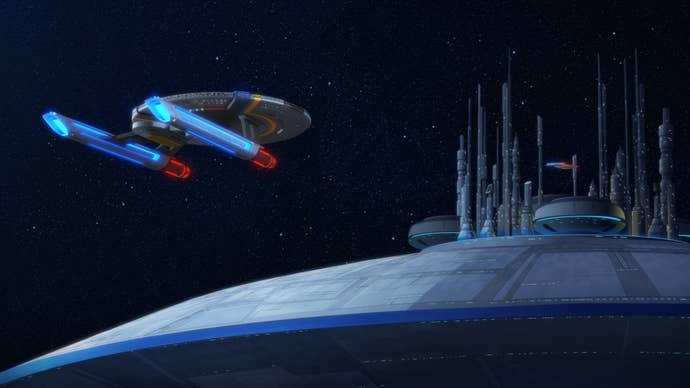
It’s a testament to Lower Decks’ quality that the Bins Out gag never occurs. Only elation. Only joy. Joy and a mild sense of relief about this being one of two Star Trek imprints since literally the late nineties that is just a genuinely good Star Trek show that you don’t have to consciously ignore the crap bits of as you watch: the reflexive self-editing mode that Trek fans have had to program themselves to do after decades of half-baked movies, prequels, reboots, and poorly considered revivals that don’t understand Star Trek’s appeal on any level beyond Kirk Good, Klingons Bad.
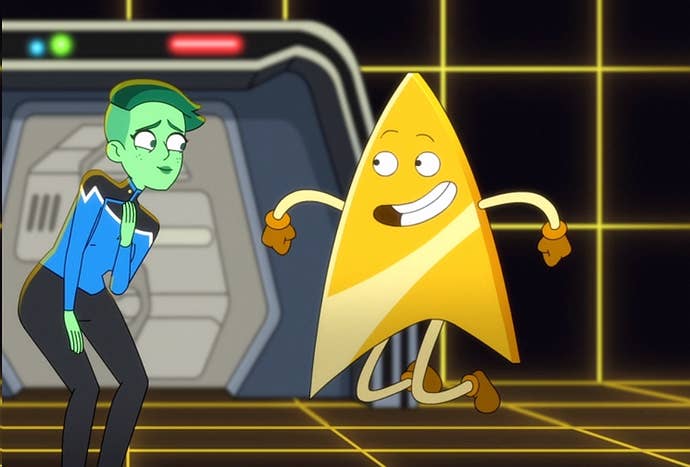
Lower Decks is the most perfect form for Star Trek in the modern age. It respects and enriches its own past, reminding us why we love this thing in the first place rather than leveraging empty nostalgia for its own sake. It will, I’m confident, go down in history as one of the best Star Treks – a Surprise Favourite that started off on shaky ground but that eventually won everyone over. Just like DS9. Just like TNG. Just like TOS.
Badgey is rubbish though, stop doing that one.
